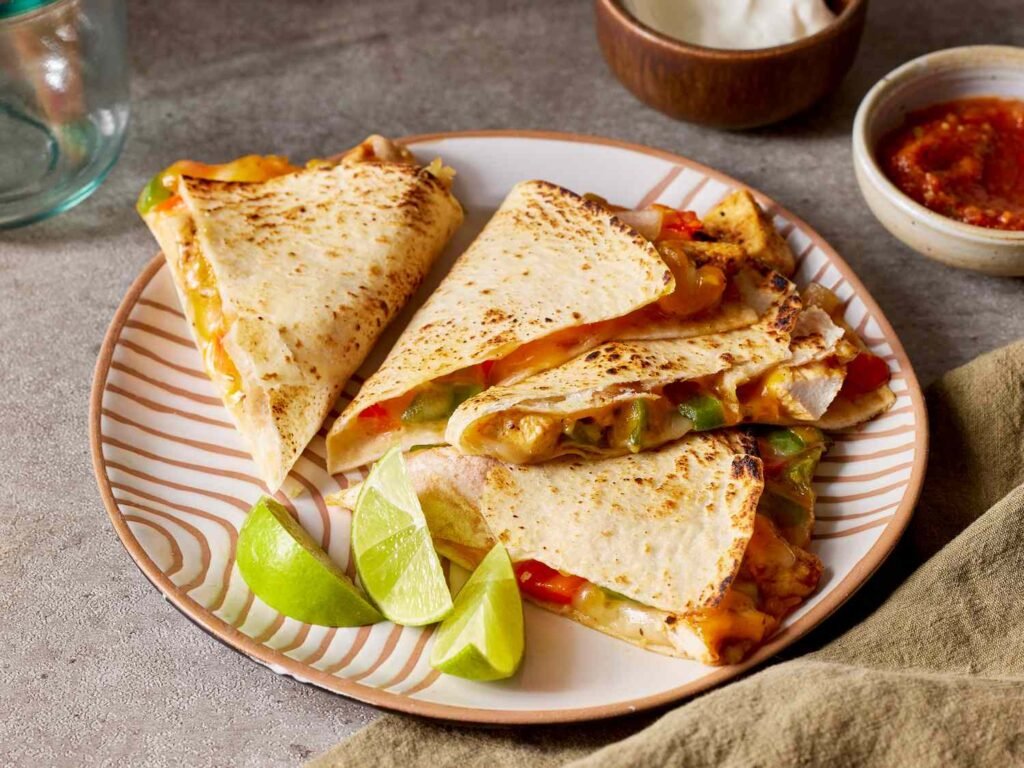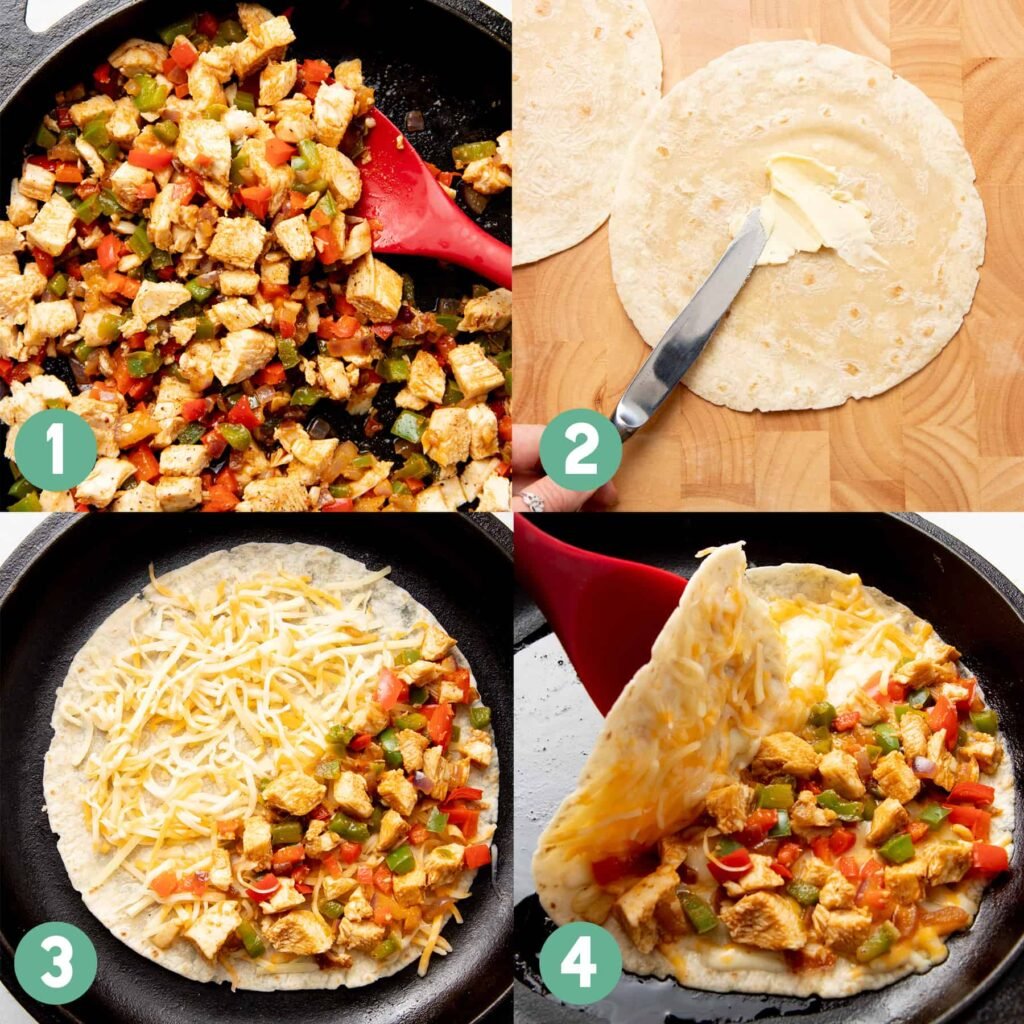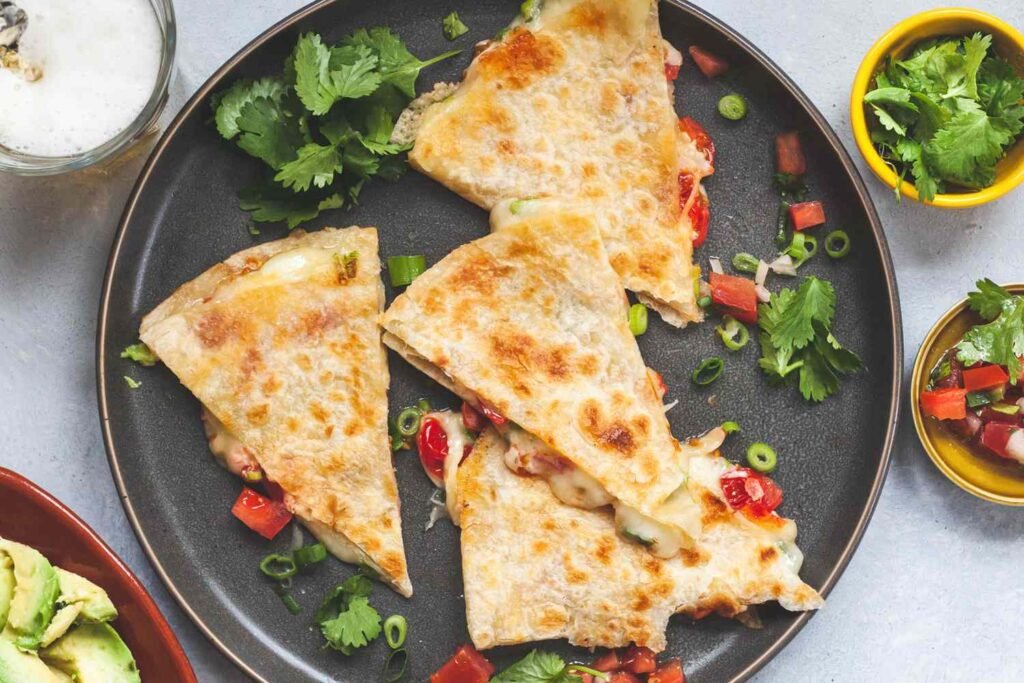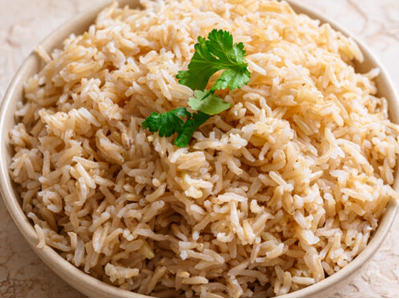Introduction
Understanding how to cook quesadillas recipe properly is essential to achieving the perfect combination of crisp texture, melted cheese, and balanced flavor. While quesadillas are a staple of Mexican-inspired cuisine, the cooking science behind them often goes overlooked. This guide breaks down every step — from butter application to heat control — to help you create a restaurant-grade quesadilla at home with precision and consistency.
When examining how to cook quesadillas recipe, three core principles emerge: optimal heat distribution, cheese melting point control, and correct flipping mechanics. Each factor contributes to a crisp exterior and a cohesive, gooey interior.
1. The Structural Base: Tortilla Selection and Preparation
The base of any homemade quesadilla recipe is the tortilla. Choose an 8- to 10-inch flour tortilla for an ideal serving size. Smaller 6-inch tortillas are appropriate for appetizers or light servings. The structural integrity of the tortilla is vital — thin tortillas tend to burn quickly, while thicker ones may result in undercooked cheese.
Lightly butter the outer surface of the tortilla. This butter coating acts as both a browning agent and a flavor enhancer. For technical accuracy, apply an even, thin layer — approximately 2 to 3 grams of butter per tortilla side. Place the tortilla on a preheated cast-iron skillet over medium to medium-high heat. Proper thermal contact ensures uniform crisping without burning.

2. Cheese Application and Melt Dynamics
When evaluating how to cook quesadillas recipe scientifically, cheese distribution is crucial. A common mistake is concentrating cheese on one half only. For ideal melting and structure, spread cheese evenly across the entire surface.
Visit also:- How to Cook Spring Rolls Recipe — Crispy, Golden, and Delicious!
The recommended cheese ratio per tortilla is:
- 50% sharp cheddar: for tang and structure
- 50% pepper jack: for meltability and spice balance
The melting range for these cheeses falls between 150°F to 160°F (65°C–71°C), which coincides with the optimal skillet temperature for a perfectly fused quesadilla. The even layer ensures a cohesive seal when folded, preventing filling leakage during flipping.
3. The Filling Framework
Quesadillas are versatile, but ingredient balance is key. A technically sound how to cook quesadillas recipe involves maintaining a 3:1 ratio of cheese to filling. Excessive filling prevents proper sealing and melting.
Recommended fillings include:
- Cooked chicken (shredded or diced)
- Black beans for fiber and texture
- Sauteed vegetables for nutritional density
Distribute fillings only on one half of the tortilla. This design allows for a proper fold and uniform melting as heat diffuses through the cheese layer.

4. Heat Management and Flipping Technique
The critical step in how to cook quesadillas recipe is timing the flip. Premature flipping leads to unmelted cheese and structural instability. The process is complete when the underside achieves a golden-brown hue and the cheese layer softens visibly.
Flip by folding the cheese side over the filling side, pressing gently to seal. The exterior should exhibit a golden crust — crisp, not burnt. Cook for an additional 60–90 seconds post-flip to achieve internal equilibrium between heat and moisture.
The “Maillard reaction” — a chemical process between amino acids and sugars — is responsible for the desirable golden crust, which typically occurs around 310°F (155°C). Managing this reaction through controlled skillet temperature is central to mastering how to cook quesadillas recipe like a professional.
5. Cutting and Presentation Methodology
Once cooked, allow the quesadilla to rest for 30 seconds to stabilize its internal structure. Cutting too early may result in cheese displacement. Slice into triangular sections; for an 8-inch tortilla, three pieces create optimal serving geometry.
This cutting technique increases the surface-to-volume ratio, enhancing both presentation and cooling efficiency. The triangular cut is not merely aesthetic — it ensures even bite distribution.
6. Garnish Systems and Temperature Contrast
In professional culinary design, contrasting temperatures and textures enhance perception. Pair the hot, crispy quesadilla with cold, creamy sides like sour cream, guacamole, or pico de gallo. These sides introduce moisture balance and sensory contrast, an integral part of how to cook quesadillas recipe at an expert level.
For advanced variation, add toppings such as:
- Fresh jalapeño slices
- Black olives
- Shredded lettuce
Apply toppings post-flip to preserve freshness and texture integrity.

7. The Physics of Texture Retention
A properly executed quesadilla maintains crispness even after resting. This is due to the balance between butter-induced crust formation and internal steam pressure management. Avoid overstuffing, which traps steam and softens the crust.
Even as the quesadilla cools, structural crispness should remain intact — a direct indicator of precise heat control and balanced moisture management.
Conclusion
Mastering how to cook quesadillas recipe is not about complexity — it’s about technique. From optimal tortilla thickness and controlled heat exposure to perfect cheese distribution and moisture balance, every small detail contributes to the end result. Once these variables are managed, every quesadilla you cook will be restaurant-worthy, crispy, and flawlessly melted.

